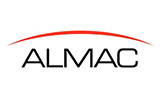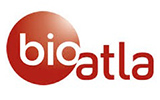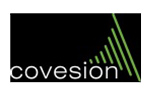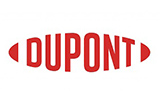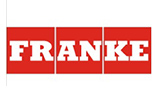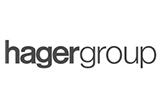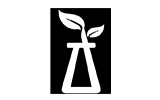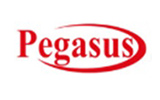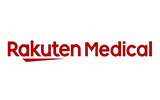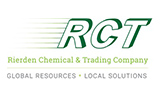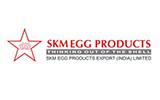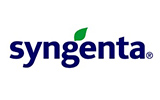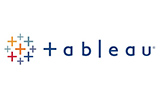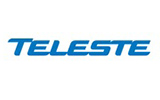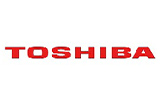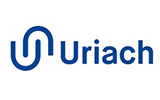CHAPTER 1:INTRODUCTION
1.1.Report description
1.2.Key benefits for stakeholders
1.3.Key market segments
1.4.Research methodology
1.4.1.Primary research
1.4.2.Secondary research
1.4.3.Analyst tools and models
CHAPTER 2:EXECUTIVE SUMMARY
2.1.Key findings of the study
2.2.CXO perspective
CHAPTER 3:MARKET LANDSCAPE
3.1.Market definition and scope
3.2.Key findings
3.2.1.Top investment pockets
3.3.Porter's five forces analysis
3.4.Value chain analysis
3.5.Parent peer market analysis
3.6.Market dynamics
3.6.1.Drivers
3.6.1.1.Growing demand for ethylene carbonate in lithium-ion electrolytes and lubricants applications
3.6.1.2.Growing automotive industry in Asia-Pacific
3.6.2.Restraint
3.6.2.1.Volatility in raw material prices
3.6.3.Opportunity
3.6.3.1.Increasing adoption of new technologies in lithium-ion batteries
CHAPTER 4:ETHYLENE CARBONATE MARKET, BY FORM
4.1.Overview
4.1.1.Market size and forecast
4.2.Solid
4.2.1.Key market trends, growth factors, and opportunities
4.2.2.Market size and forecast, by region
4.3.Liquid
4.3.1.Key market trends, growth factors, and opportunities
4.3.2.Market size and forecast, by region
CHAPTER 5:ETHYLENE CARBONATE MARKET, BY APPLICATION
5.1.Overview
5.1.1.Market size and forecast
5.2.Lubricants
5.2.1.Key market trends, growth factors, and opportunities
5.2.2.Market size and forecast, by region
5.3.Surface Coatings
5.3.1.Key market trends, growth factors, and opportunities
5.3.2.Market size and forecast, by region
5.4.Plasticizers
5.4.1.Key market trends, growth factors, and opportunities
5.4.2.Market size and forecast, by region
5.5.Lithium battery electrolytes
5.5.1.Key market trends, growth factors, and opportunities
5.5.2.Market size and forecast, by region
5.6.Others
5.6.1.Key market trends, growth factors, and opportunities
5.6.2.Market size and forecast, by region
CHAPTER 6:ETHYLENE CARBONATE MARKET, BY END USE
6.1.Overview
6.1.1.Market size and forecast
6.2.Automotive
6.2.1.Key market trends, growth factors, and opportunities
6.2.2.Market size and forecast, by region
6.3.Oil & Gas
6.3.1.Key market trends, growth factors, and opportunities
6.3.2.Market size and forecast, by region
6.4.Medical
6.4.1.Key market trends, growth factors, and opportunities
6.4.2.Market size and forecast, by region
6.5.Others
6.5.1.Key market trends, growth factors, and opportunities
6.5.2.Market size and forecast, by region
CHAPTER 7:ETHYLENE CARBONATE MARKET, BY REGION
7.1.Overview
7.1.1.Market size and forecast
7.2.North America
7.2.1.Key market trends, growth factors, and opportunities
7.2.2.Market size and forecast, by form
7.2.3.Market size and forecast, by application
7.2.4.Market size and forecast, by end use
7.2.5.Market share analysis, by country
7.2.6.U.S.
7.2.6.1.Market size and forecast, by form
7.2.6.2.Market size and forecast, by application
7.2.6.3.Market size and forecast, by end use
7.2.7.Canada
7.2.7.1.Market size and forecast, by form
7.2.7.2.Market size and forecast, by application
7.2.7.3.Market size and forecast, by end use
7.2.8.Mexico
7.2.8.1.Market size and forecast, by form
7.2.8.2.Market size and forecast, by application
7.2.8.3.Market size and forecast, by end use
7.3.Europe
7.3.1.Key market trends, growth factors, and opportunities
7.3.2.Market size and forecast, by form
7.3.3.Market size and forecast, by application
7.3.4.Market size and forecast, by end use
7.3.5.Market share analysis, by country
7.3.6.Germany
7.3.6.1.Market size and forecast, by form
7.3.6.2.Market size and forecast, by application
7.3.6.3.Market size and forecast, by end use
7.3.7.UK
7.3.7.1.Market size and forecast, by form
7.3.7.2.Market size and forecast, by application
7.3.7.3.Market size and forecast, by end use
7.3.8.France
7.3.8.1.Market size and forecast, by form
7.3.8.2.Market size and forecast, by application
7.3.8.3.Market size and forecast, by end use
7.3.9.Italy
7.3.9.1.Market size and forecast, by form
7.3.9.2.Market size and forecast, by application
7.3.9.3.Market size and forecast, by end use
7.3.10.Spain
7.3.10.1.Market size and forecast, by form
7.3.10.2.Market size and forecast, by application
7.3.10.3.Market size and forecast, by end use
7.3.11.Rest of Europe
7.3.11.1.Market size and forecast, by form
7.3.11.2.Market size and forecast, by application
7.3.11.3.Market size and forecast, by end use
7.4.Asia-Pacific
7.4.1.Key market trends, growth factors, and opportunities
7.4.2.Market size and forecast, by form
7.4.3.Market size and forecast, by application
7.4.4.Market size and forecast, by end use
7.4.5.Market share analysis, by country
7.4.6.China
7.4.6.1.Market size and forecast, by form
7.4.6.2.Market size and forecast, by application
7.4.6.3.Market size and forecast, by end use
7.4.7.Japan
7.4.7.1.Market size and forecast, by form
7.4.7.2.Market size and forecast, by application
7.4.7.3.Market size and forecast, by end use
7.4.8.India
7.4.8.1.Market size and forecast, by form
7.4.8.2.Market size and forecast, by application
7.4.8.3.Market size and forecast, by end use
7.4.9.South Korea
7.4.9.1.Market size and forecast, by form
7.4.9.2.Market size and forecast, by application
7.4.9.3.Market size and forecast, by end use
7.4.10.Australia
7.4.10.1.Market size and forecast, by form
7.4.10.2.Market size and forecast, by application
7.4.10.3.Market size and forecast, by end use
7.4.11.Rest of Asia-Pacific
7.4.11.1.Market size and forecast, by form
7.4.11.2.Market size and forecast, by application
7.4.11.3.Market size and forecast, by end use
7.5.LAMEA
7.5.1.Key market trends, growth factors, and opportunities
7.5.2.Market size and forecast, by form
7.5.3.Market size and forecast, by application
7.5.4.Market size and forecast, by end use
7.5.5.Market share analysis, by country
7.5.6.Brazil
7.5.6.1.Market size and forecast, by form
7.5.6.2.Market size and forecast, by application
7.5.6.3.Market size and forecast, by end use
7.5.7.Saudi Arabia
7.5.7.1.Market size and forecast, by form
7.5.7.2.Market size and forecast, by application
7.5.7.3.Market size and forecast, by end use
7.5.8.South Africa
7.5.8.1.Market size and forecast, by form
7.5.8.2.Market size and forecast, by application
7.5.8.3.Market size and forecast, by end use
7.5.9.Rest of LAMEA
7.5.9.1.Market size and forecast, by form
7.5.9.2.Market size and forecast, by application
7.5.9.3.Market size and forecast, by end use
CHAPTER 8:COMPETITIVE LANDSCAPE
8.1.Introduction
8.1.1.Market player positioning, 2019
CHAPTER 9:COMPANY PROFILES
9.1.Asahi Kasei Corp.
9.1.1.Company overview
9.1.2.Company snapshot
9.1.3.Operating business segments
9.1.4.Product portfolio
9.1.5.Business performance
9.1.6.Key strategic moves and developments
9.2.BASF SE
9.2.1.Company overview
9.2.2.Company snapshot
9.2.3.Operating business segments
9.2.4.Product portfolio
9.2.5.Business performance
9.3.Cole-Parmer Instrument Company, LLC.
9.3.1.Company overview
9.3.2.Company snapshot
9.3.3.Product Portfolio
9.4.Empower Materials, Inc.
9.4.1.Company overview
9.4.2.Company snapshot
9.4.3.Product Portfolio
9.5.Huntsman Corporation
9.5.1.Company overview
9.5.2.Company snapshot
9.5.3.Operating business segments
9.5.4.Product portfolio
9.5.5.Business performance
9.6.MERCK KGaA
9.6.1.Company overview
9.6.2.Company snapshot
9.6.3.Operating business segments
9.6.4.Product portfolio
9.6.5.Business performance
9.7.Mitsubishi Chemical Holdings
9.7.1.Company overview
9.7.2.Company snapshot
9.7.3.Operating business segments
9.7.4.Product Portfolio
9.7.5.Business performance
9.8.Prasol Chemicals Ltd.
9.8.1.Company overview
9.8.2.Company snapshot
9.8.3.Product Portfolio
9.9.Thermo Fisher Scientific
9.9.1.Company overview
9.9.2.Company snapshot
9.9.3.Operating business segments
9.9.4.Product portfolio
9.9.5.Business performance
9.10.Vizag Chemicals International
9.10.1.Company overview
9.10.2.Company snapshot
9.10.3.Product Portfolio


